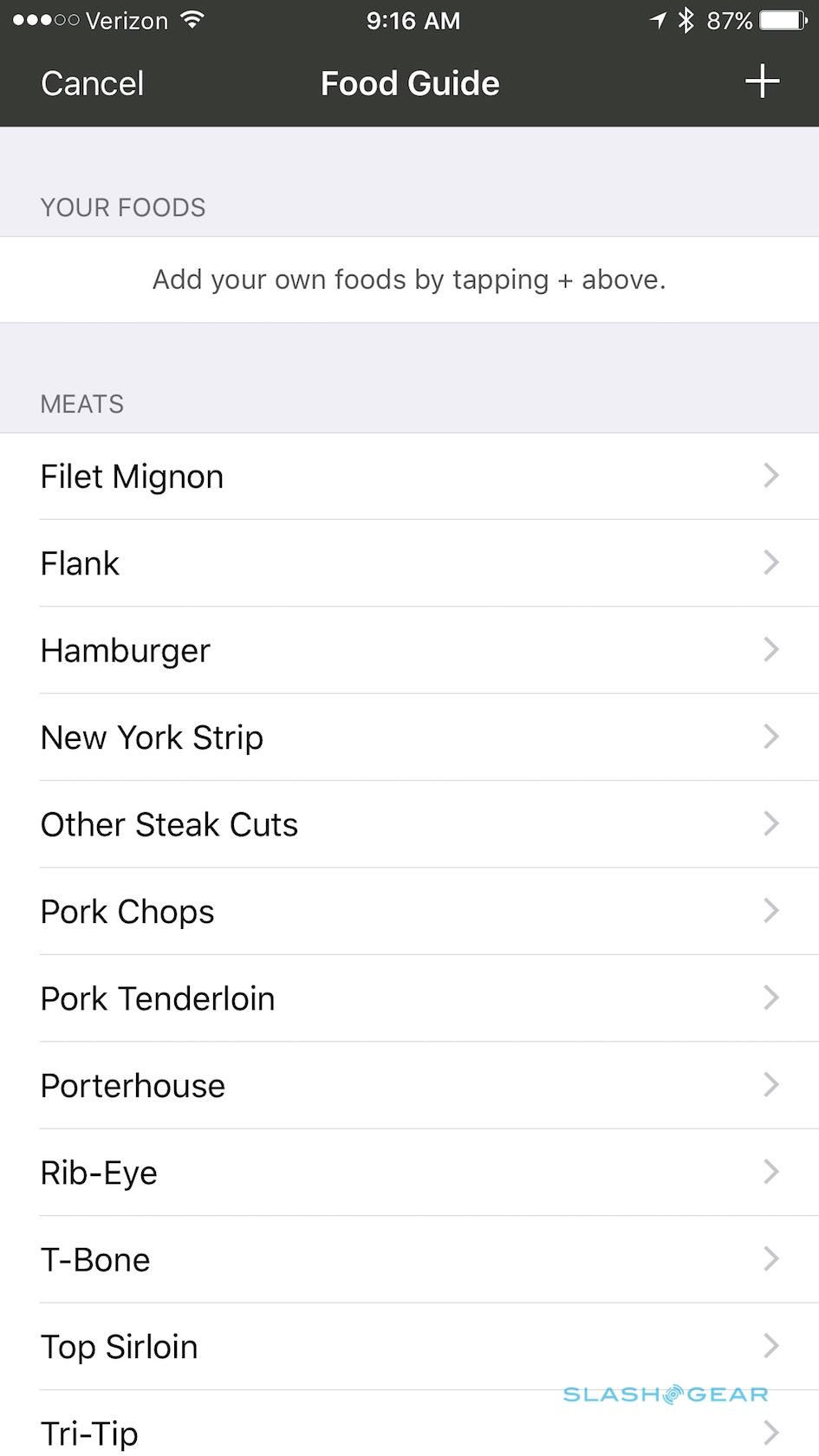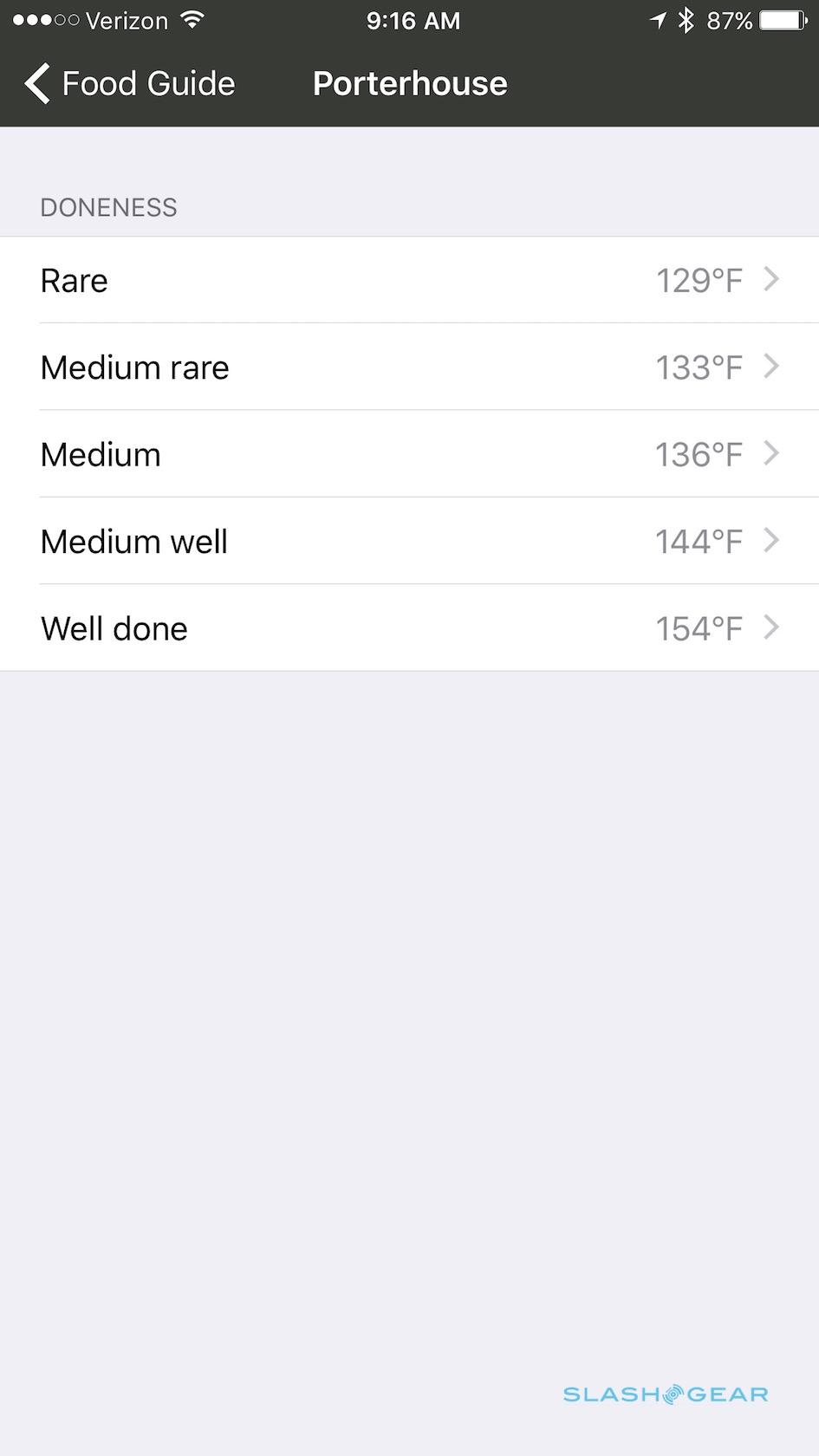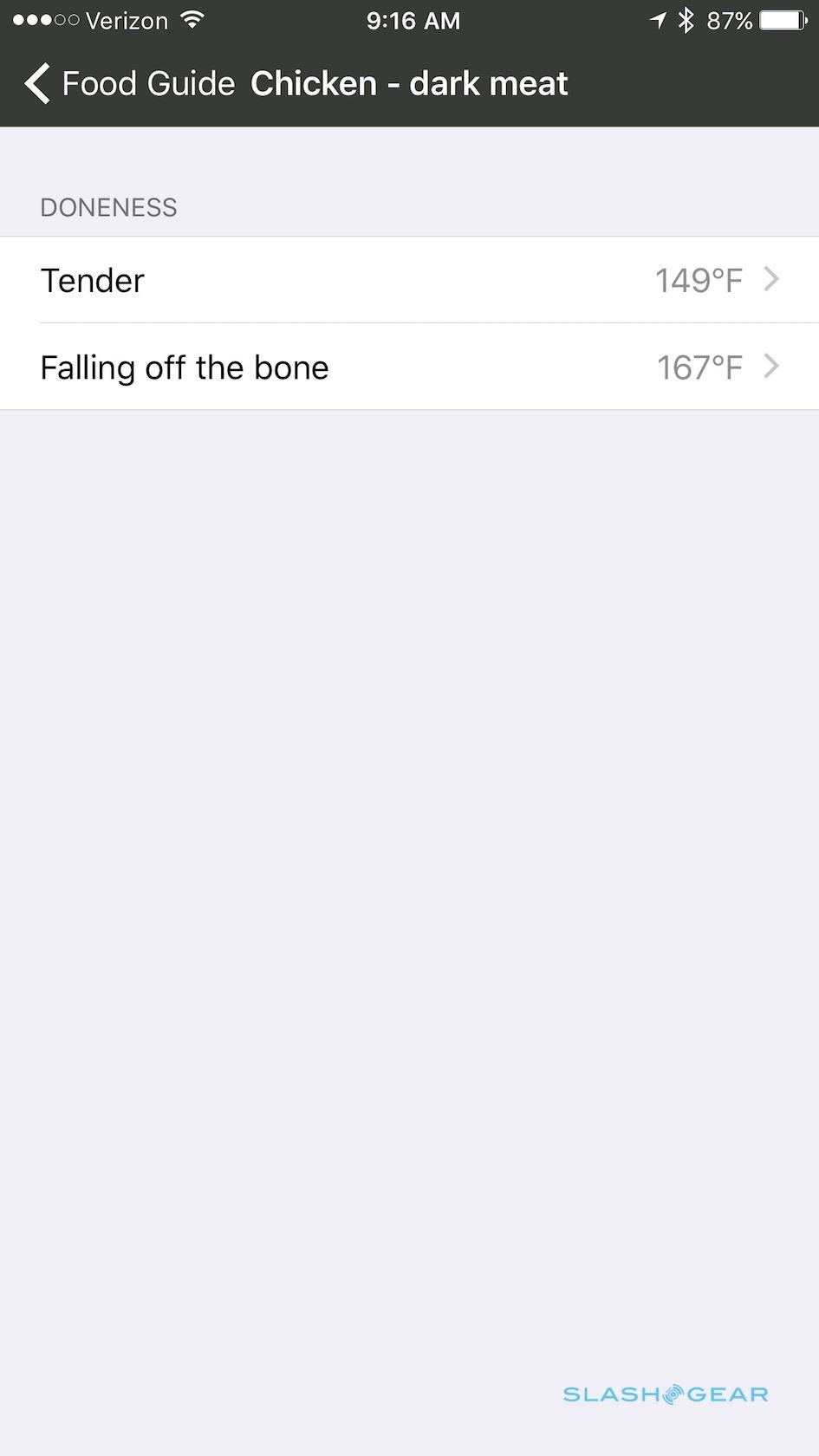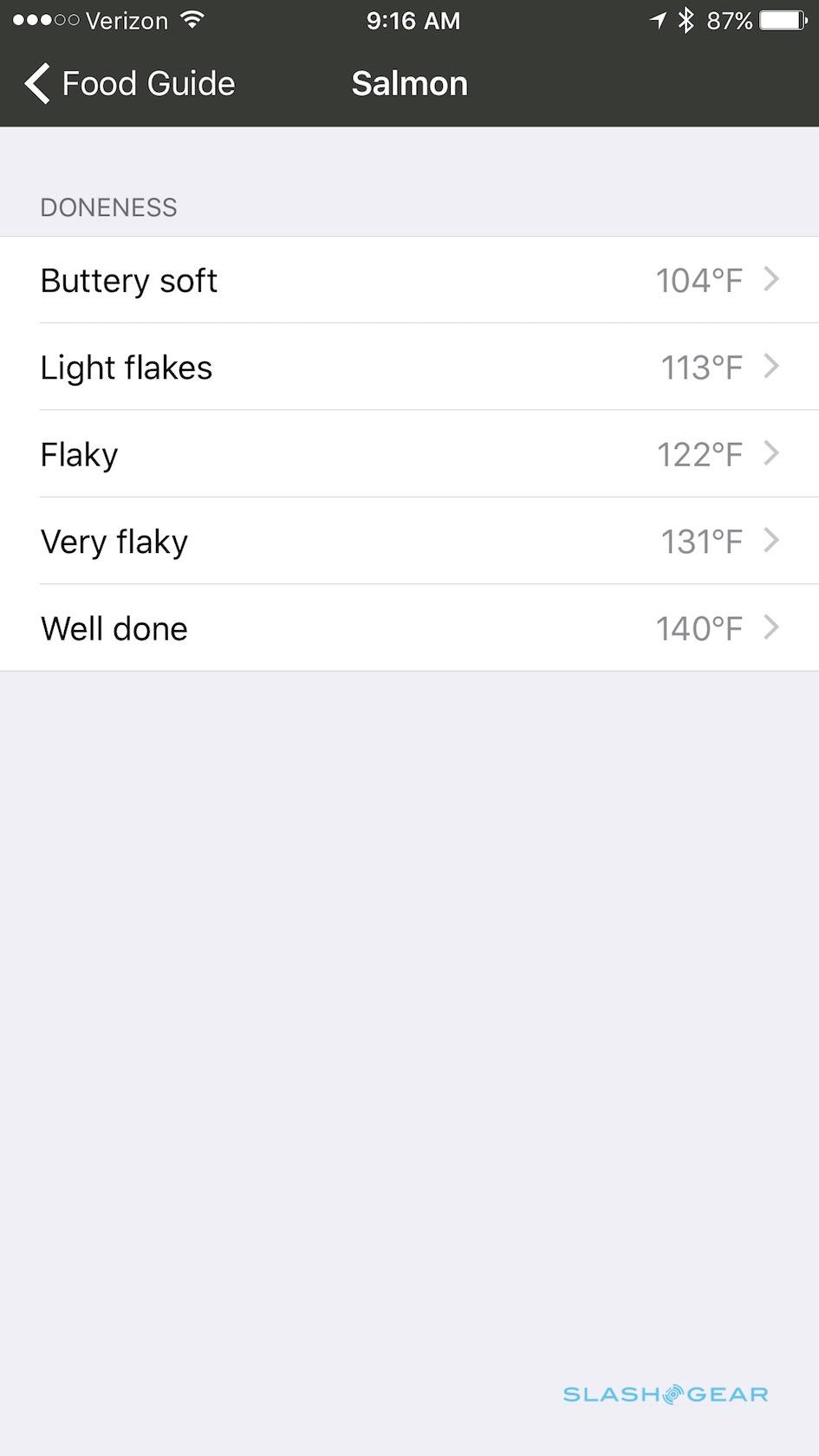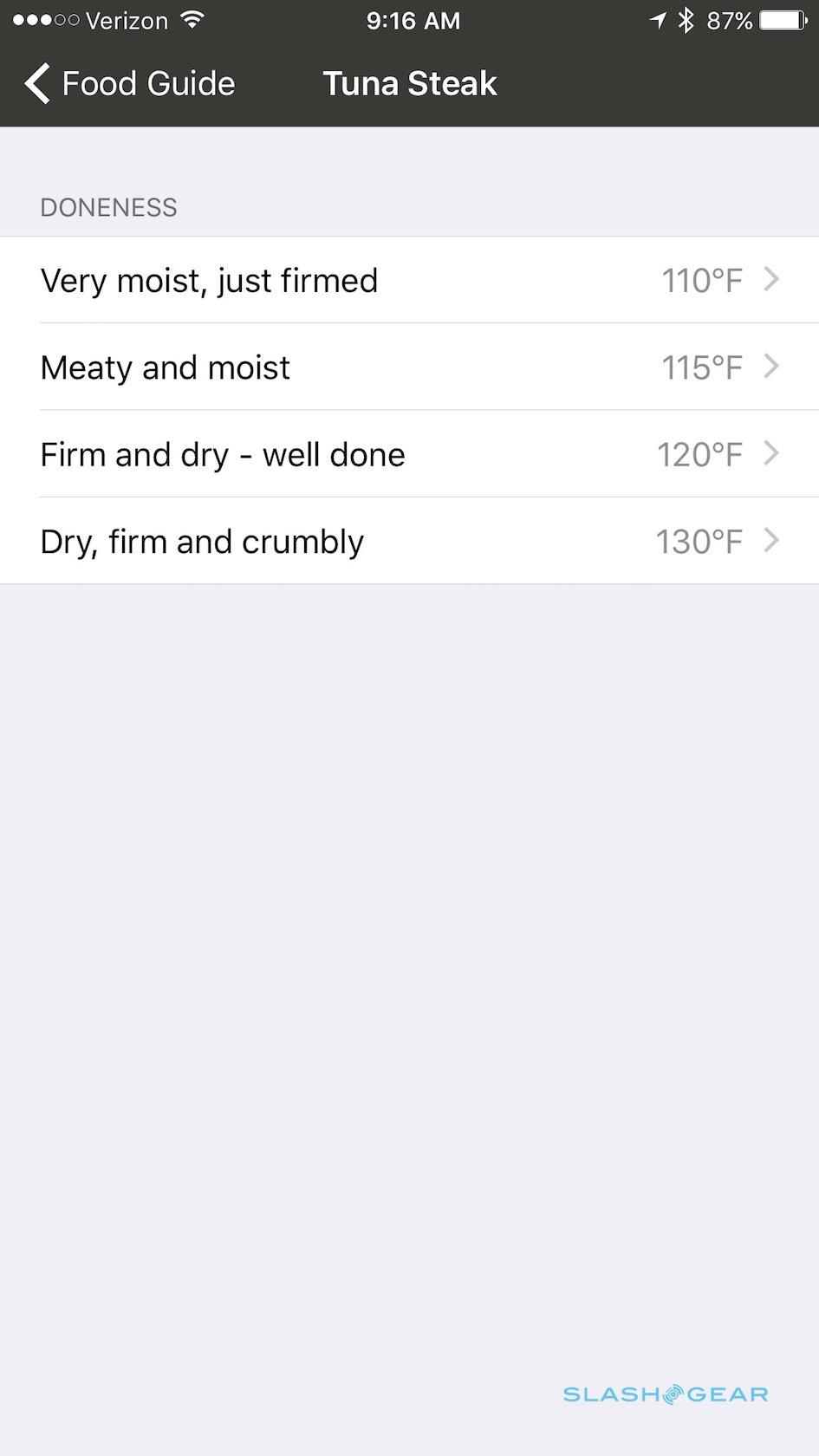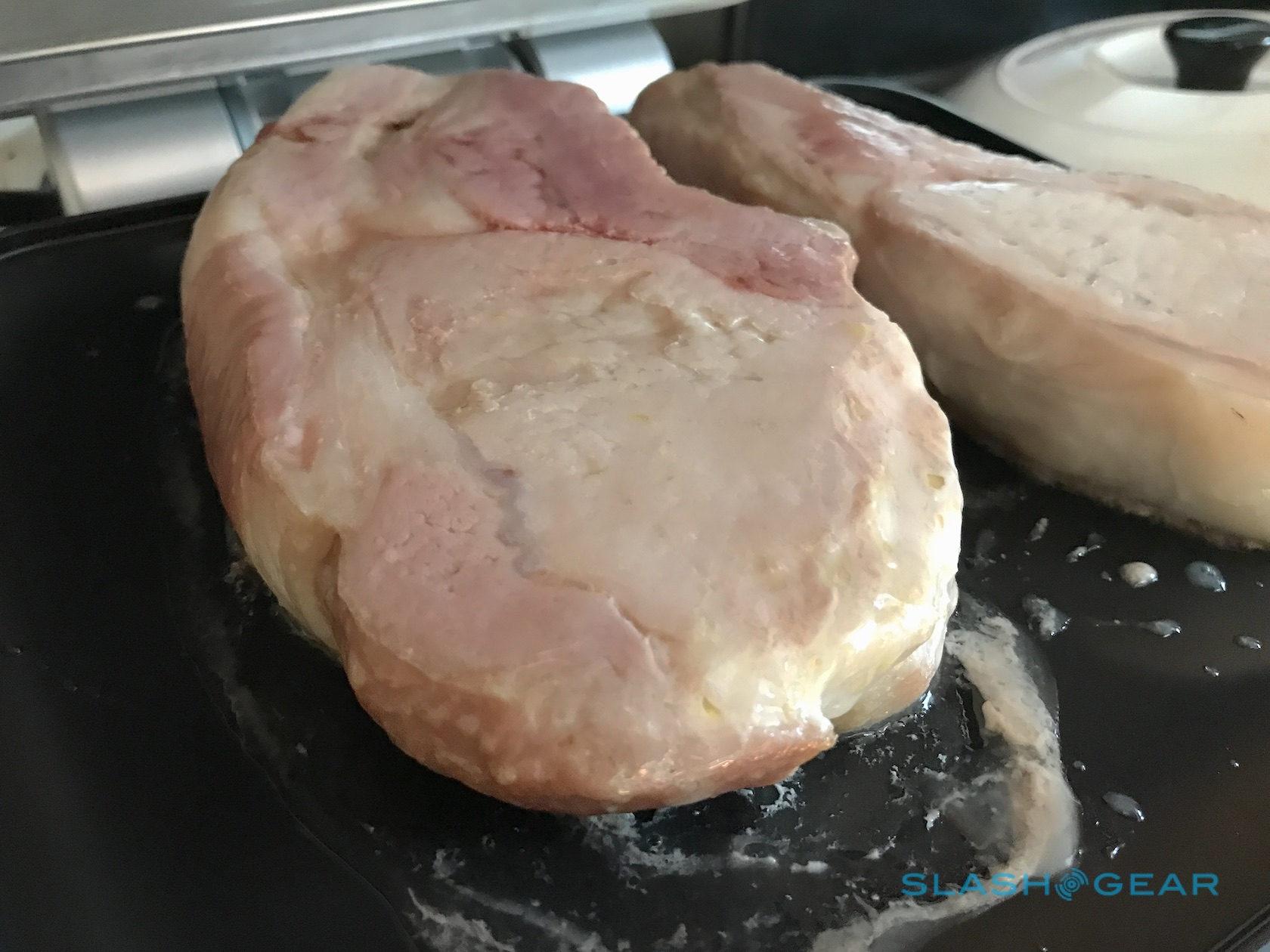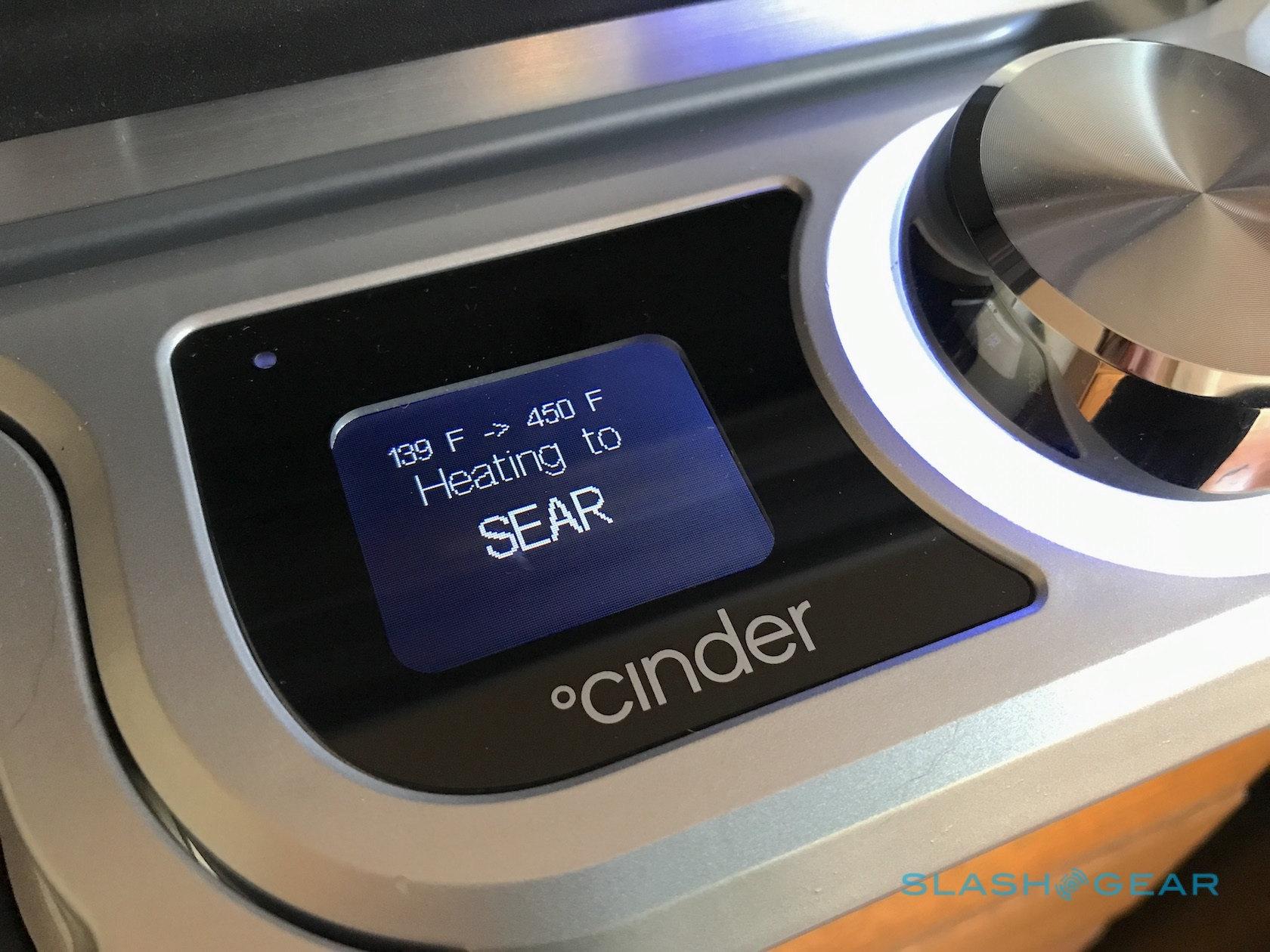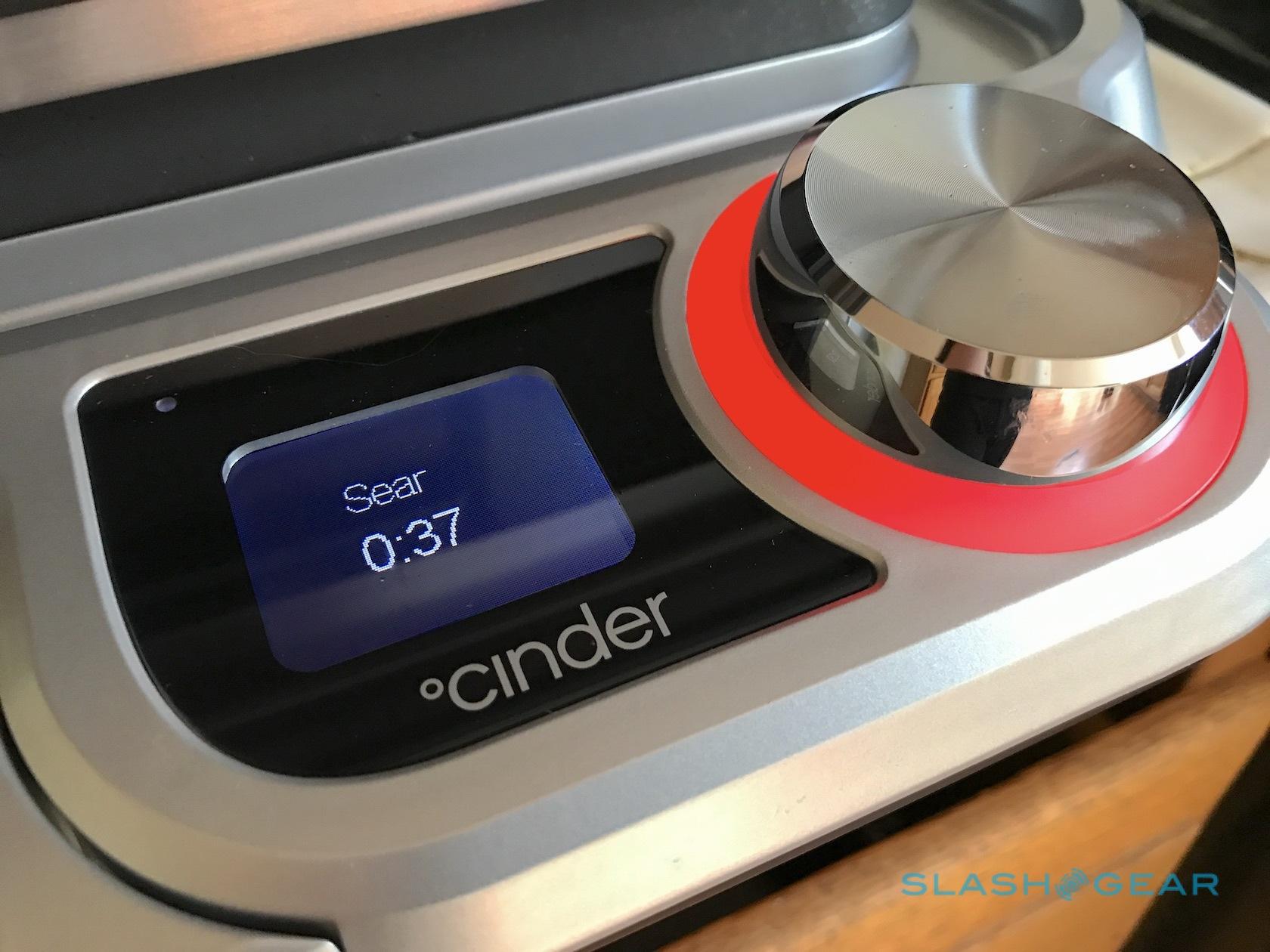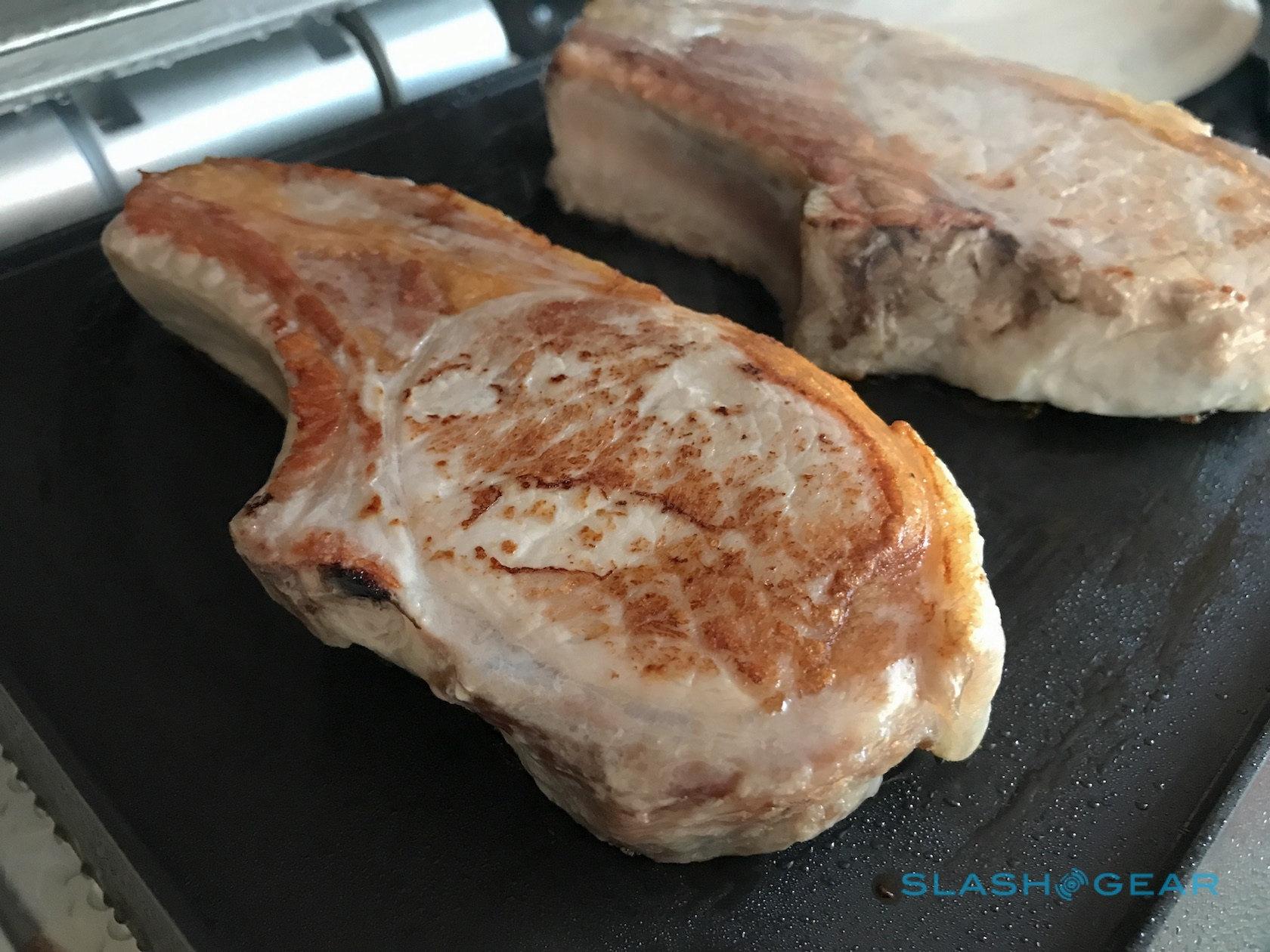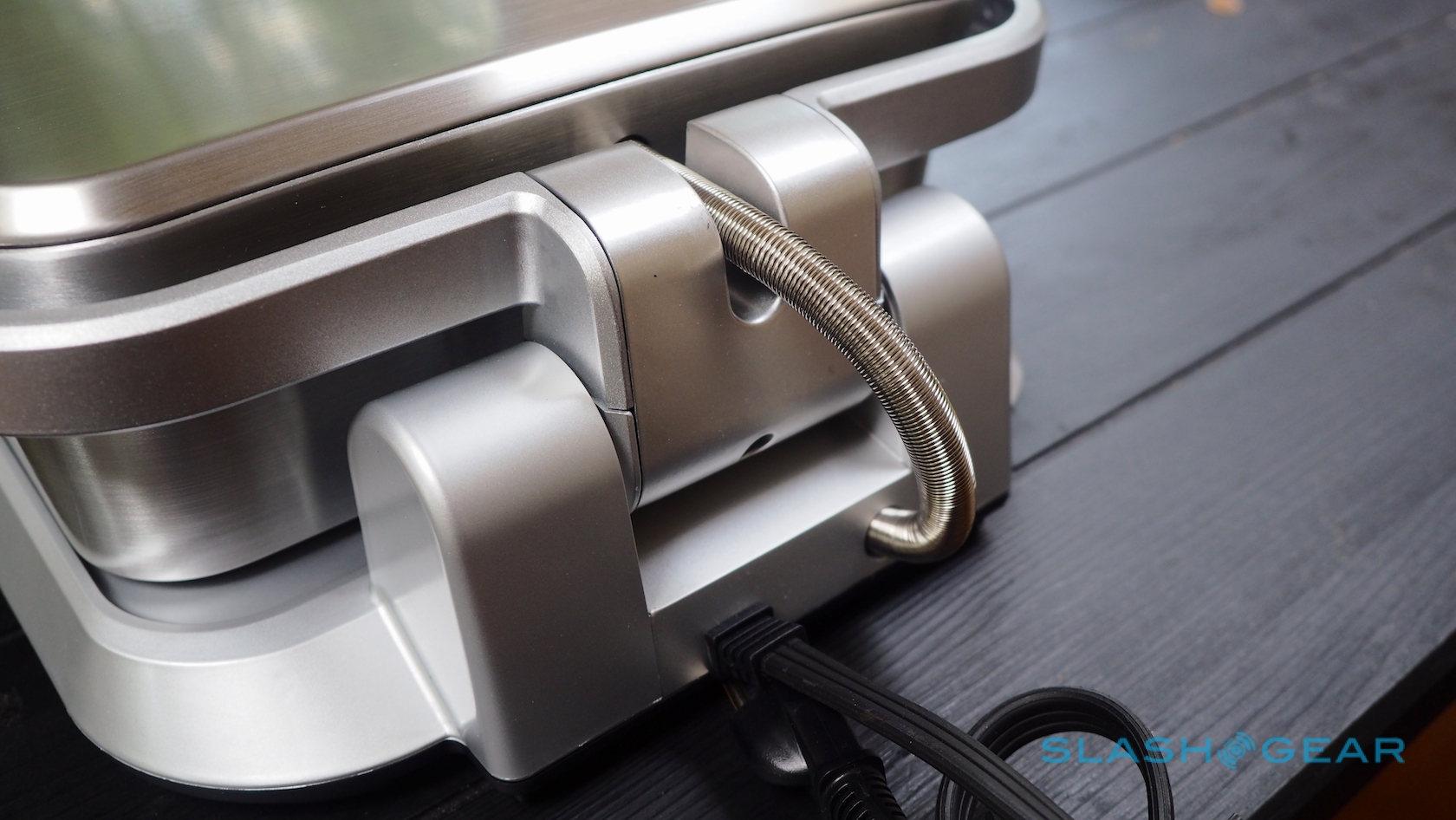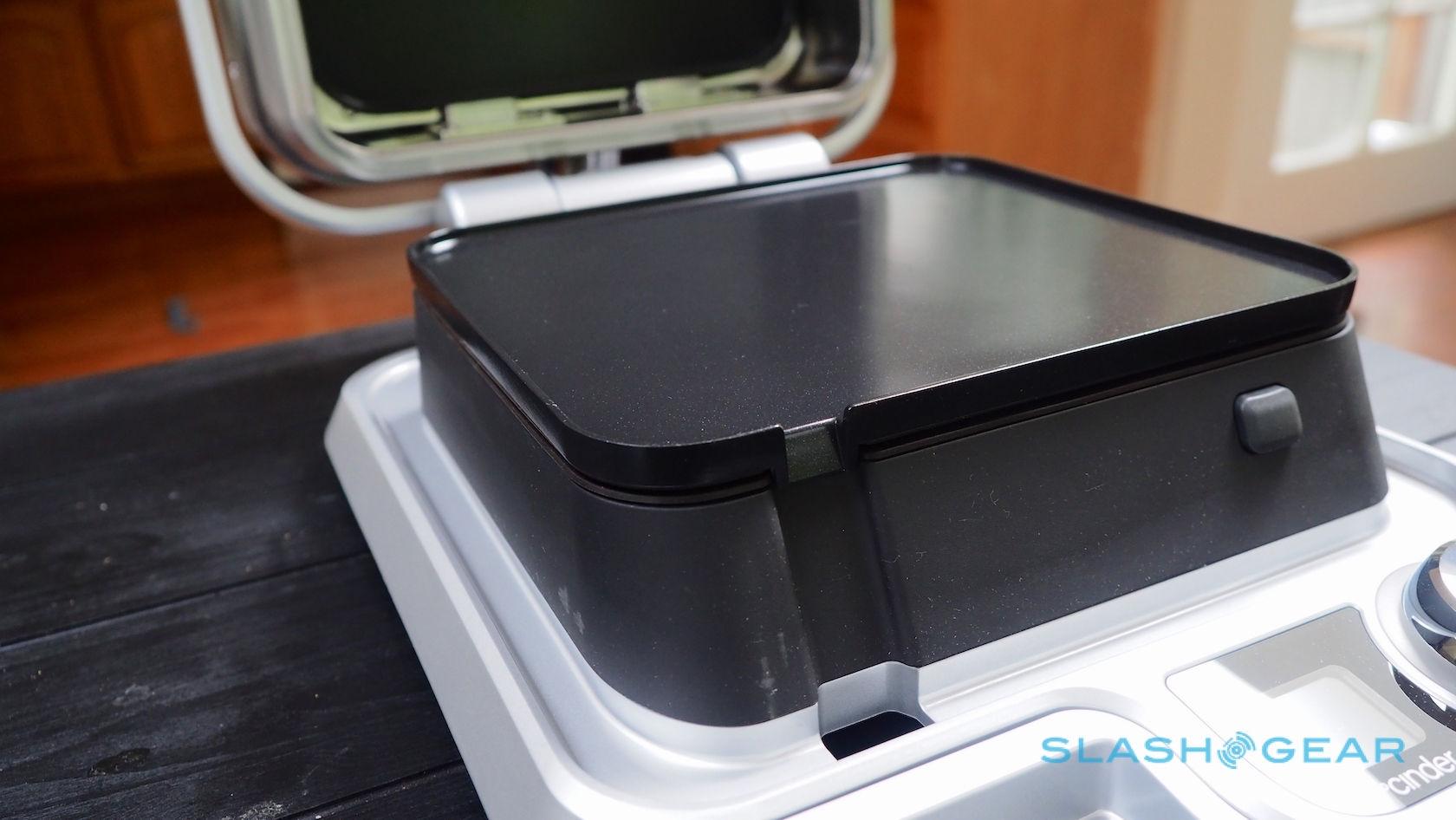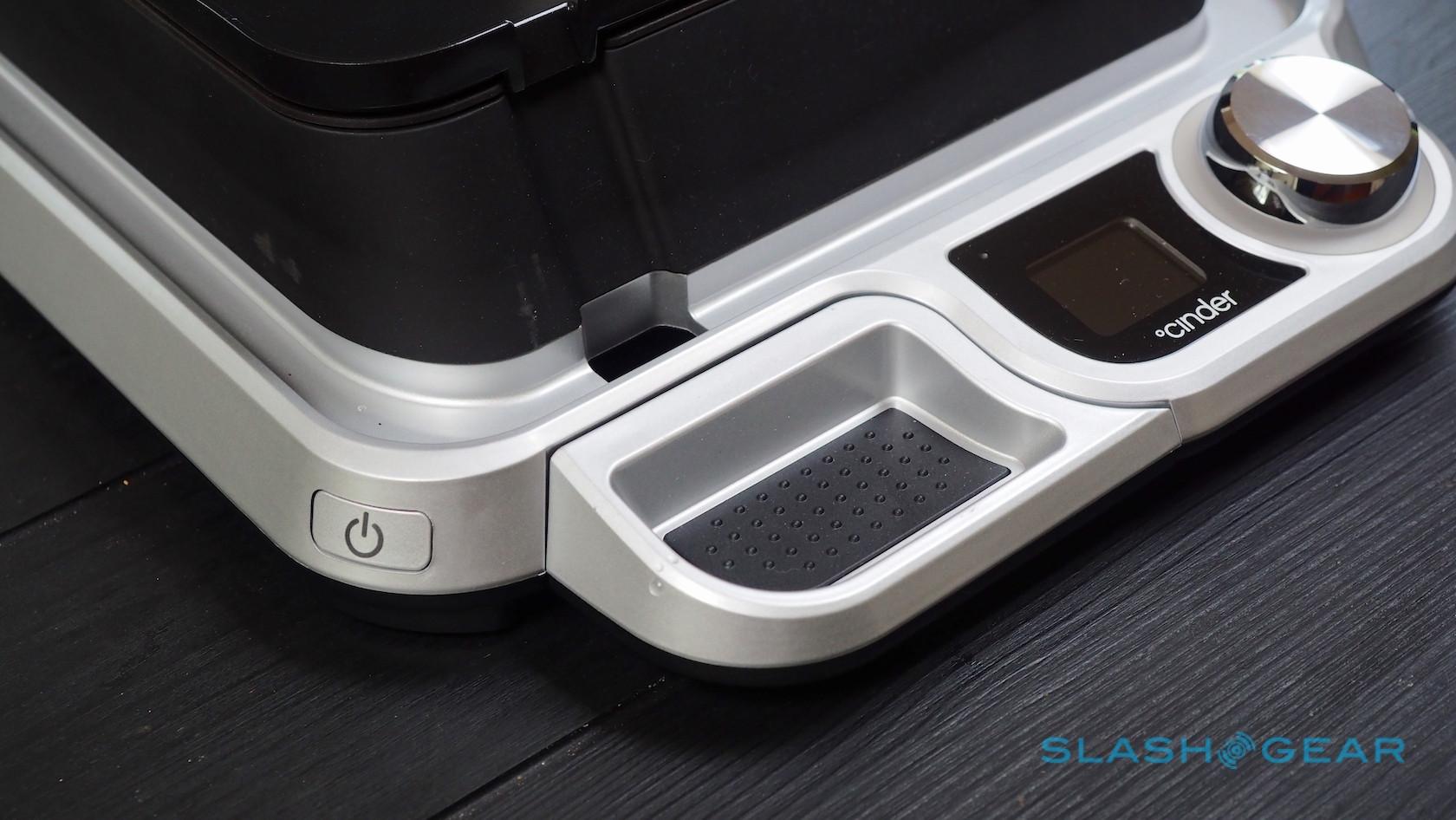Cinder Grill Review: Sous-vide's even geekier rival
- Cooks a fantastic steak
- App presets are helpful
- Solid construction suggests it'll last
- Barebones app lacks meal options
- Clean-up can be tricky
- Expensive and large
The Cinder grill really wants you to enjoy the perfect steak, and it doesn't want you to have a headache making it. As a greedy geek with a counter crammed full of kitchen gadgets and a taste for meat, that certainly appealed, as did Cinder's promise of sous-vide style cooking without the hassle of preheating water baths and bagging up your meals. Question is, at 2-3 times the price you'd pay for an entry-level sous-vide machine, does this grill do enough to justify its existence?
Cinder is not a small appliance. At 13 x 17 x 7 inches it's larger than most sandwich toasters; with plenty of metal in the construction it's heavy too, to the point where you're unlikely to want to move it once you've found a space for it. To open the lid fully you'll need an 18-inch gap between the counter and any wall cabinets above it: in my case, that meant moving it to another spot since the cabinets were just too low.
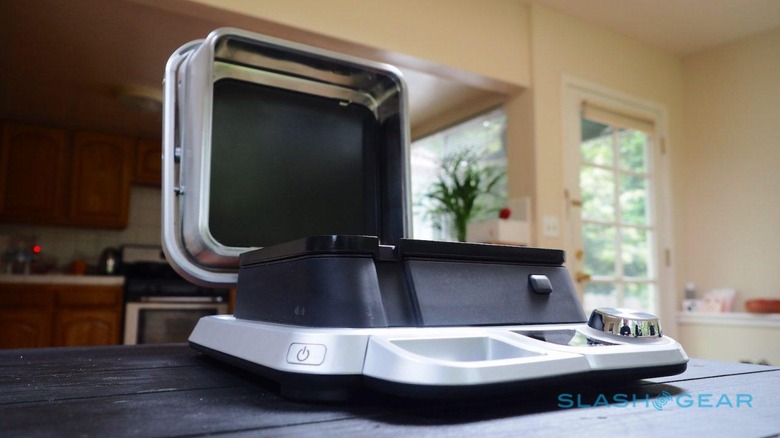
With the exception of a slightly wobbly control knob on the fascia, I can't knock Cinder's build. Open the top and you find the two non-stick plates, each measuring 10 x 9 inches. They can be removed with a pair of corresponding latches, though since they're filled with tiny heating elements you can't put them in the dishwasher. Indeed, the only part that supports that is the drip tray.
That gathers any juices or run-off from a "moat" that runs the periphery of the lower grill plate. It's flat rather than angled like a George Foreman grill, which Cinder says means you can even fry eggs on it. Still, forget sauces. I also found that most of the liquid that emerged during cooking either stayed pooled on the lower plate or in the moat, never actually making it to the drip tray itself.
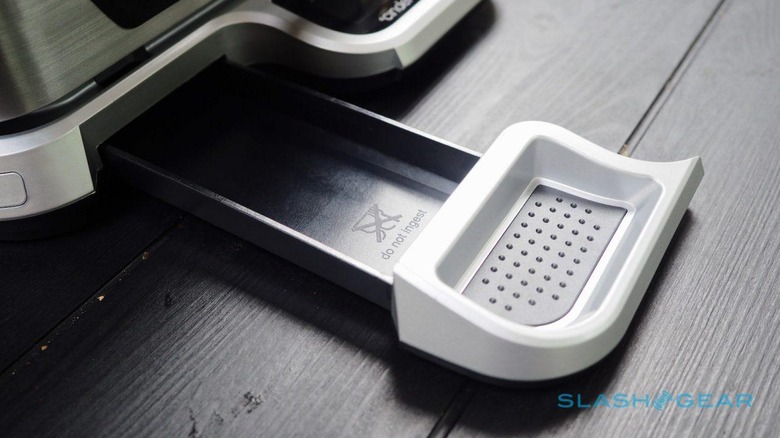
You can use Cinder from the front-panel controls entirely, if you prefer. The small monochrome display shows current plate temperature and target temperature, adjusted with the dial to the right. There's no clock or timer, however, so you'll need to keep an eye on that yourself.
Alternately, there's the Cinder app. Currently that's available for iOS and it's a fairly uninspiring design. It covers the basics, like setting the temperature, monitoring what state the grill is in, and choosing from a small selection of recipes. Unfortunately, where sous-vide star Joule, for example, has a large database of potential meals together with guide videos and web links, Cinder's version is somewhat more limited.
Meats are the most well catered-for, with most typical cuts of steak catered for. There are a few vegetables, along with a handful of fish. Each usually has a choice of temperatures organized by the final result: whether you want a rare or medium rib-eye, for instance, or flaky salmon versus "buttery soft". If you create a free Cinder account you can save your own presets too, though you're on your own when it comes to picking the right temperature.
Cinder uses a combination of those recipe presets with the thickness of what you actually put between the grill plates, relying on sensors in the lid to figure the latter out. At that point it gives an estimate of how long you'll have to wait. With a pair of inch-thick pork chops, for instance, I was warned it would take 65 minutes to get to medium-rare. Hit "start" and the grill begins heating up.
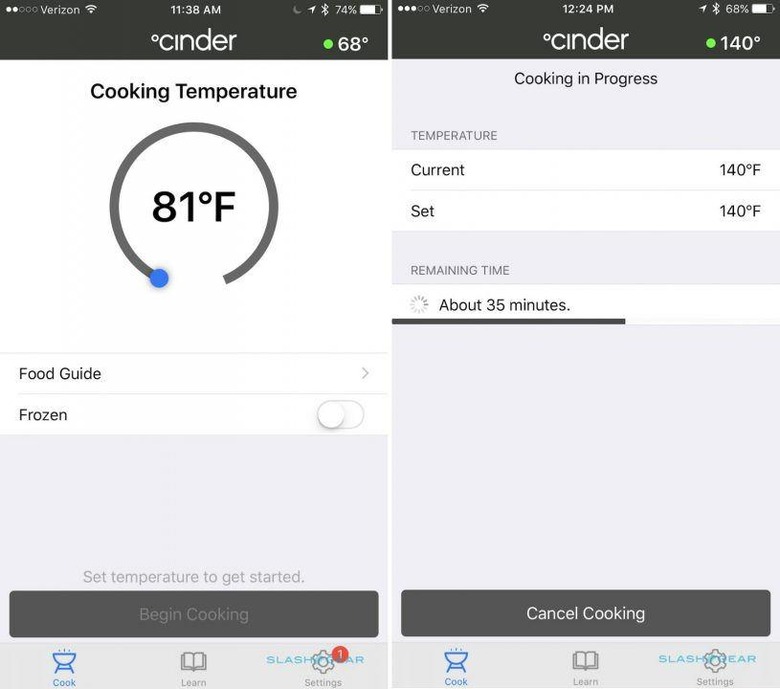
It's not terribly communicative while the cooking actually happens. If you've used the app to control Cinder, the grill's own display only says "Remote Control" rather than an indication of time or temperature. Still more annoying, the "time's up" alarm is on your smartphone only: while the grill does have a speaker, it won't make a peep if the app was used.
That old "single-use" appliance argument
The traditional advice is simple: don't dedicate counter space to an appliance that only does one thing. Clearly, I didn't get that memo. Currently on my kitchen counter I have a microwave, two slow-cookers, and an electric pressure cooker. In a cupboard lurk two stick-style sous-vide machines; I've a third, a water-bath style I inexplicably backed on a crowdfunding campaign, on the way. Weirdest of all, though, is the fact that I actually use all of them regularly.
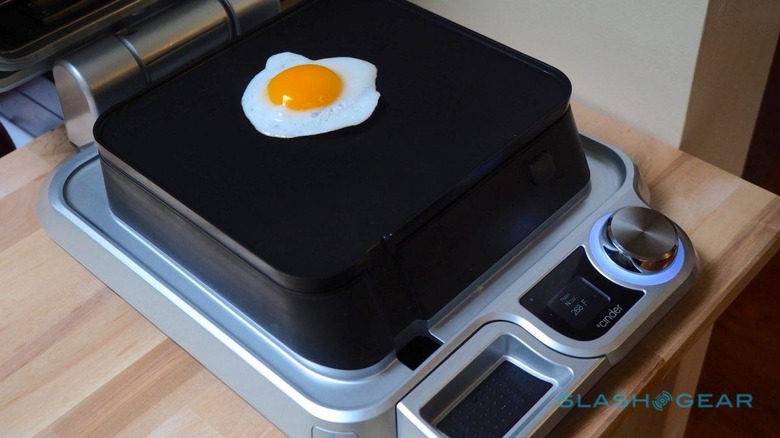
Obviously your tolerance for just how specific a role a device plays will vary depending on how much you enjoy cooking with it, how much space you have to accommodate it, and your budget. Were I starting from scratch, I'd probably keep the microwave and the electric pressure cooker. However, I'm greedy and so I'm more willing to fill the kitchen with gadgetry.
So, does Cinder deliver?
I love a good pork chop, but my track record with traditional pan-frying is mediocre. It's all too easy to skate through of the narrow sweet-spot where the meat is just cooked but hasn't quite started to dry out. My best DIY chops have been in a sous-vide, then finished off in a hot pan to give that Malliard reaction browning.
I was curious, therefore, to see if Cinder could compete. After all, the company says that the grill borrows some sous-vide principles like precision heating and a fairly sealed cooking compartment, but without messing with vacuum sealing bags or a big container of water. So, I brushed a couple of pork chops with oil, slapped them between Cinder's plates, and picked medium-rare in the app.
Turns out, it's worth keeping an eye on the time. After about 45 minutes, the app was telling me it would take another 14 more before the pork was ready. Seconds later, I got a notification saying it was done. Like with sous-vide, the idea is that the precisely controlled heating means even if you leave the meat in there for an hour or two, it won't be spoiled. Still, I was hungry, so instead I whipped the two chops out, wiped the plates down with paper towels, and turned on sear mode.
As sous-vide cooks have discovered, meat doesn't generally look too appealing when it's first out. Since the temperature is low, there's no browning: sure enough, the pork was an uninspiring grey. Cinder gets around that with a 450 degree Fahrenheit mode it calls sear, which basically cranks the grill up to its max so you can get your steaks crispy.
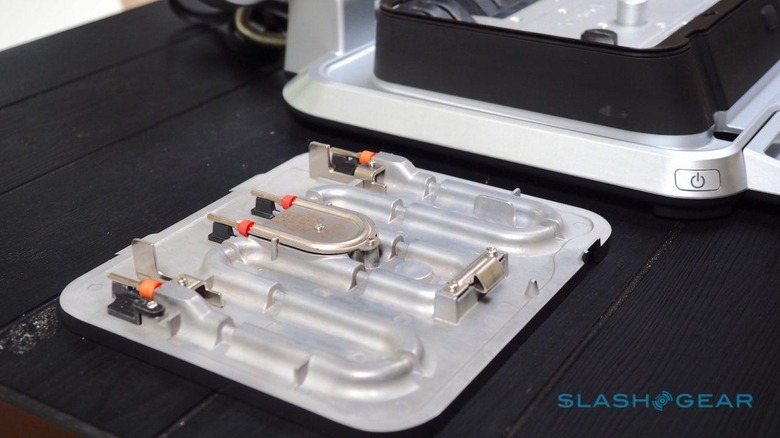
Going from the 140 degrees the Cinder app had used for the cook, to the 450 degrees searing required, took around a second per degree. After waiting five minutes, I put the two pieces of meat back within the plates and watched a 45 second countdown on the grill's display. A buzzer sounds at that point, but Cinder keeps searing just in case you want a deeper brown. Bear in mind you won't get the picturesque griddle lines, though Cinder says it's working on ridged plates which will snap in instead; they're due later in the year.
Even without the lines, the resulting chop looked decent, though probably could've done with another 5-10 seconds building up a crust. Cutting in, meanwhile, it looked closer to medium than medium-rare. The pork was still reasonably juicy, though it lacked the fluffiness of its sous-vide counterpart. Much better than doing it all in a regular pan, however.
In the time that followed I tried vegetables, other steaks, and even fried eggs. Some work better with the grill lid open rather than closed; none overshot their estimated cook time, though food being ready sooner than expected proved to be an occupational hazard.
The user experience needs work
My primary frustration with Cinder hasn't been the hardware, it's the broader user experience. The company may criticize the humble frying pan for being low-tech, but it's at least straightforward to comprehend. Cinder's grill, in contrast, has several variables – temperature, time, lid open or closed, to oil or not to oil – and right now it doesn't do a great job of talking you through them.
Take, for example, a fried egg. Now, Cinder doesn't have a preset for that in its app right now; however, it does have a couple of mentions of eggs on its website. One, under "temperature suggestions by food type", suggests fried or scrambled eggs should be done at 275 degrees for 5-10 minutes. However the "food types" page indicates 350 degrees would be the better starting point, leaving the lower temperature for omelets or scrambled eggs.
I came across the first page first, so heated the grill to 275. There was no mention either way about using oil or not, so I brushed a small amount of olive oil onto the lower plate, just to be safe. When Cinder reached temperature, I cracked two eggs carefully onto it and then closed the lid. Since there's no way to set a timer on the grill itself, I kept an eye on the clock instead.
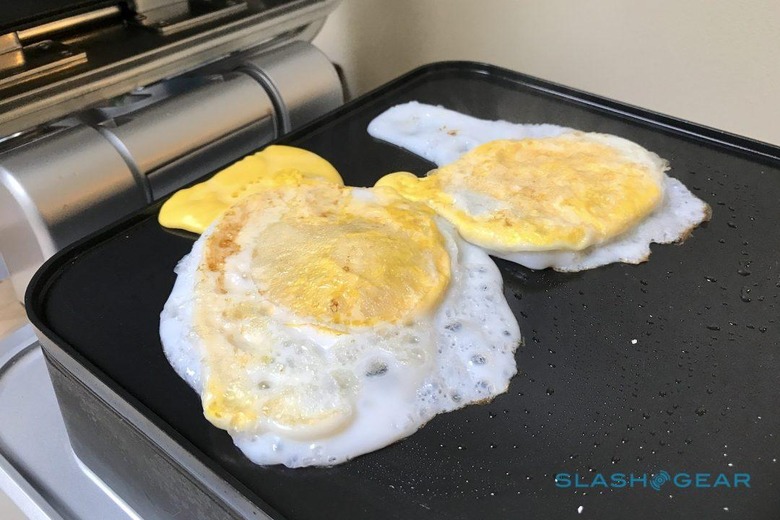
Some hissing, popping noises three minutes later had me opening the lid to check progress, only to find the eggs were now overcooked. The top plate had squeezed them omelette-flat, bursting the yolk and cooking it to the point that it was opaque yellow. There were some slightly crispy edges from the oil, which were pleasant, but that was about the best of it.
Second time lucky? Wiping off the oil – having come across another Cinder support page which suggests it isn't necessary because of the non-stick, ceramic plates – I stuck with 275 degrees but left the lid open. Cinder's 5-10 minute estimate seemed much more appropriate this time around, the egg gently cooking through so that the yolk was still runny even by the time the white had set. Only a light spiderweb of browning on the bottom this time, however, probably from what small oil residue remained from the previous cook.
Now I'm all for kitchen experimentation, but when your pitch is foolproof meals every time, I feel Cinder's delivery lacks that essential polish. Users shouldn't have to go by trial and error to get the best results, or weigh the pros and cons of contrary advice. Two near-inedible eggs isn't a cooking disaster, but I'd be less sanguine if I'd just ruined a couple of expensive prime ribs.
Is Cinder better than sous-vide?
Overall, I feel like the sous-vide comparison is a little misplaced. Cinder is a very tightly controlled grill pan which, with some familiarization, proved capable of very consistent, near foolproof meat cooking. Indeed, the closest similarity to the water-bath method is that you need to tinker with the temperature settings to find your own personal sweet-spot.
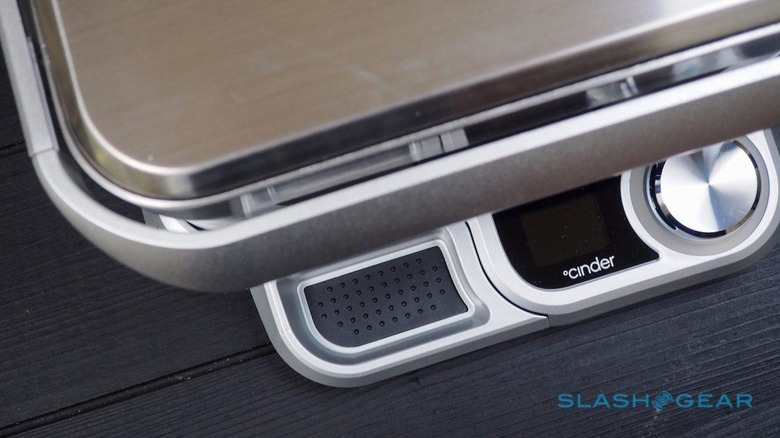
If part of Cinder's charm is doing without the water bath of sous-vide, then it has to be said its downside is cleaning up. The two grill plates are the easiest: you can wait until they cook down, pop them free, and give them a quick scrub, but I found a non-stick-friendly sponge was enough to get rid of any burnt-on leftovers. Unfortunately, the moat around the edge proved a little trickier, especially at the back by the hinge where it's easy to catch a finger on a still-hot plate. Instead, you have to wait until everything has cooled down, at which point the drippings have congealed and tend to smear.
The other annoyance is trying to clean the inside of the lid. It's a trap for condensation and grease spatters which have a tendency to drip down and onto the counter top behind the hinge. Again, while the grill plate itself is removable the lid as a whole is not. Best make sure you have plenty of paper towels on-hand.
Wrap-Up
If you're talking steak, Cinder versus sous-vide is a fairly close battle. Both take a similar length of time to cook; each has its foibles in clean-up. Cinder has an edge in the speed at which you get going – there's only a couple of minutes waiting for the grill to reach its working temperature, unlike what's usually a far longer period for a water-bath to come up to temp – and being able to sear directly on the same appliances is useful.
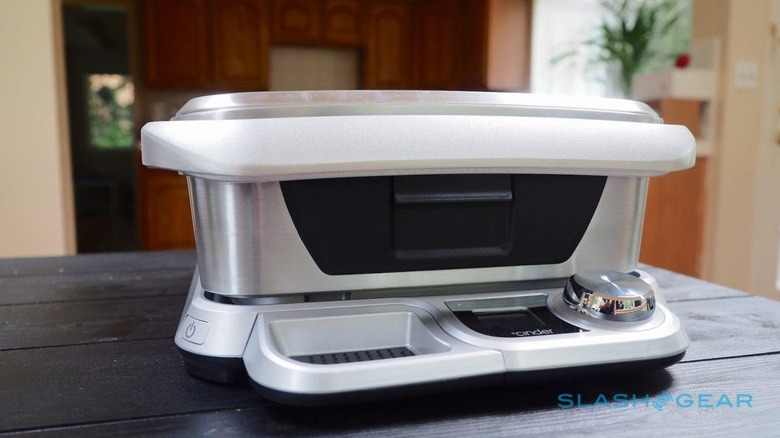
All the same, there are clear advantages to sous-vide. If you have a marinade, or are trying to cook something non-flat or irregularly shaped, Cinder can't help you. It may only have been a few years since sous-vide made its way into the domestic kitchen, but apps like those for Joule and Anova are miles ahead of the barebones Cinder app. Android users, meanwhile, are currently out of luck altogether.
Were I cooking nothing but steaks, those compromises would be less onerous. Yet the fact that you can get an Anova sous-vide for under $150, while Cinder costs $459, makes the former method a lot more affordable to dip a toe into. Right now, Cinder shows promise but its lackluster app experience means early-adopters of this expensive grill don't get the support they might expect for the outlay.

